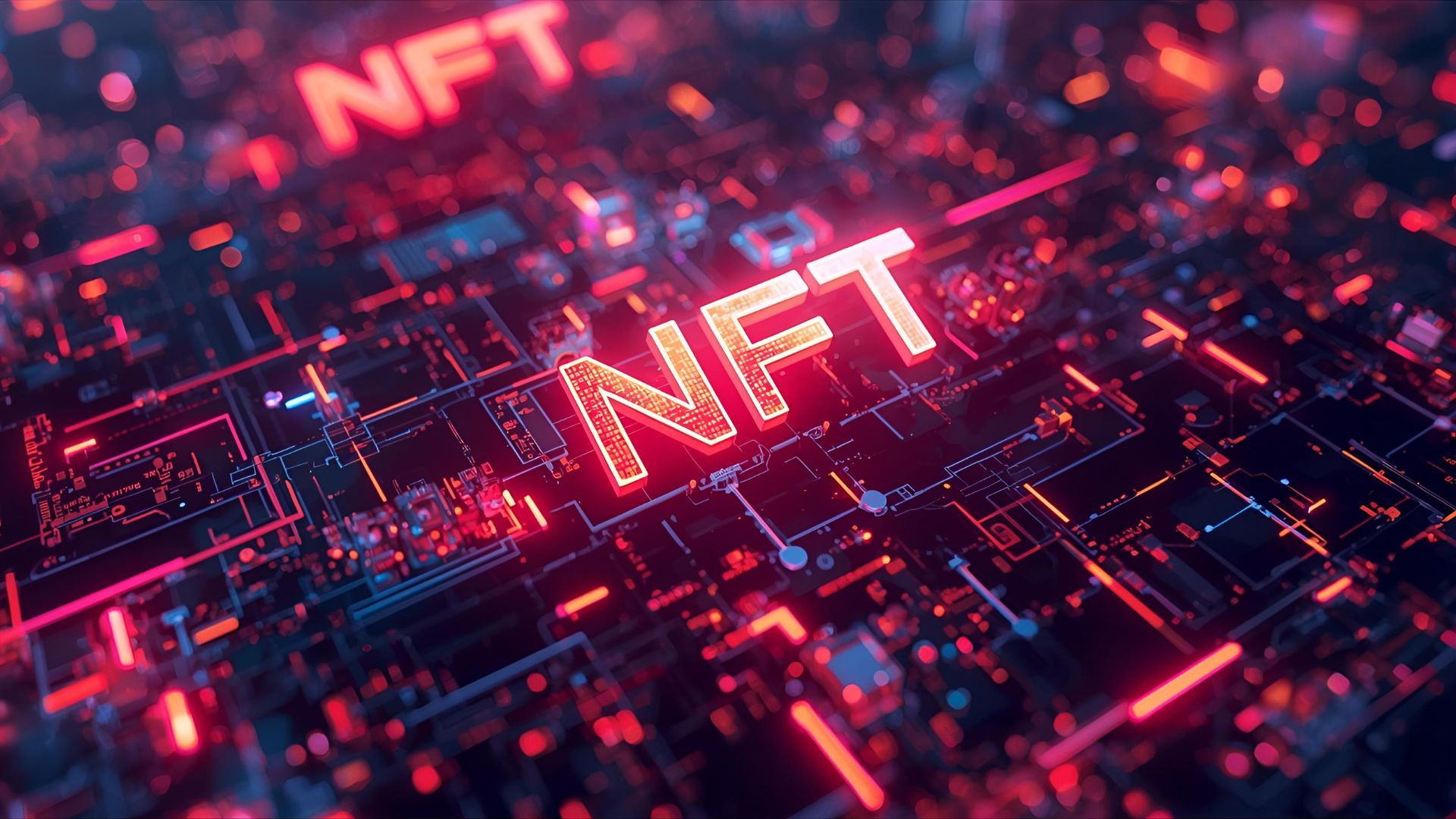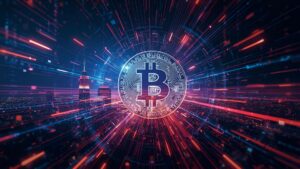The NFT market has experienced dramatic highs and crushing lows since its explosive emergence in 2021. Many predicted the death of digital collectables after the market correction of 2022-2023. Yet, as we navigate through 2025, a fascinating phenomenon continues: billionaire buying NFTs remains a strategic investment approach for ultra-wealthy collectors. While mainstream media declared NFTs dead, elite investors quietly accumulated premium digital assets, positioning themselves for the next wave of blockchain innovation. This article explores why sophisticated collectors continue investing in non-fungible tokens and what their strategy reveals about the future of digital ownership.
The persistence of billionaires buying NFTs in 2025 isn’t nostalgia or stubborn optimism—it’s a calculated strategy backed by evolving utility, institutional adoption, and a long-term vision that extends far beyond speculative trading.
Why Are Billionaires Still Buying NFTs in 2025?
The Strategic Vision Behind Continued NFT Investment
The question “Why is a billionaire buying NFTs in 2025?” reveals a fundamental misunderstanding of how elite collectors approach alternative assets. Ultra-wealthy investors don’t follow retail trends—they identify undervalued assets during market downturns and accumulate positions that others abandon.
NFT investment strategies employed by billionaires differ significantly from the 2021 retail frenzy. Today’s sophisticated collectors focus on:
- Provenance and historical significance: Blue-chip collections like CryptoPunks and Autoglyphs represent digital art history
- Utility-driven tokens: NFTs providing real-world benefits, membership access, or intellectual property rights
- Fractional ownership: Tokenised real estate, luxury goods, and fine art
- Gaming and metaverse assets: Virtual land and in-game items with genuine economic ecosystems
- Identity and authentication: NFTs serving as digital passports, credentials, and verification systems
The billionaire buying NFTs phenomenon in 2025 reflects a mature market where speculation has given way to fundamental value assessment. These collectors understand that blockchain-based ownership isn’t disappearing—it’s evolving into infrastructure for the digital economy.
Market Correction Created Opportunity
Savvy investors recognise that the 2022-2023 NFT market correction eliminated weak projects while strengthening legitimate use cases. When retail participants fled, billionaires saw opportunity. This pattern repeats across asset classes: sophisticated money accumulates during fear and distributes during euphoria.
Digital art collecting has become increasingly institutionalised. Major auction houses like Christie’s and Sotheby’s now regularly feature NFT sales alongside traditional art. Museums acquire digital pieces for permanent collections. This institutional validation attracts wealthy NFT collectors who view these assets as cultural artefacts rather than speculative trades.
The Evolution of NFT Utility Beyond Digital Art
NFTs as Infrastructure for Digital Ownership
The narrative around NFTs has shifted dramatically from 2021’s profile picture mania to 2025’s utility-focused applications. Billionaire buying NFTs today often involves tokens that provide tangible benefits:
Tokenised Real-World Assets: Real estate deeds, luxury watches, fine wine, and classic cars are increasingly represented as blockchain assets. This tokenisation enables fractional ownership, improved liquidity, and transparent provenance tracking—features particularly attractive to ultra-wealthy collectors managing diverse portfolios.
Exclusive Access and Membership: Premium crypto collectables now function as keys to exclusive communities, events, and experiences. Billionaires invest in NFTs that grant access to private networking opportunities, investment syndicates, or luxury services that align with their lifestyle and business interests.
Intellectual Property Rights: Musicians, filmmakers, and content creators use NFTs to represent ownership stakes in their work. Billionaire buying NFTs in this category often involves acquiring rights to revenue streams from music royalties, film profits, or licensing agreements.
Gaming and Metaverse Economies
The gaming industry’s integration of NFT investment represents billions in economic activity. Virtual worlds with genuine economies attract serious capital from collectors who understand digital scarcity’s value proposition.
Luxury digital assets in gaming environments aren’t frivolous—they’re investments in virtual economies with millions of active participants. When a billionaire buying NFTs acquires premium virtual real estate in platforms like Decentraland or The Sandbox, they’re betting on the continued digitisation of human interaction and commerce.
These virtual spaces host concerts, business meetings, educational events, and social gatherings. Owning prime virtual real estate mirrors physical world dynamics where location and scarcity drive value.
The Billionaire Collectors Making Headlines in 2025

High-Profile NFT Portfolios
Several billionaires have publicly discussed their continued NFT investment activities in 2025:
Technology Entrepreneurs: Silicon Valley billionaires who built their fortunes on internet disruption view blockchain technology as the next paradigm shift. Their NFT portfolio acquisitions focus on projects demonstrating technical innovation and solving real problems.
Traditional Art Collectors: Established art world billionaires initially sceptical of digital art collecting now recognise NFTs as a legitimate medium. They’re acquiring works from renowned digital artists and pieces that bridge the physical and digital art worlds.
Crypto-Native Wealth: Early cryptocurrency investors who became billionaires naturally extend their blockchain investments to NFTs. They understand the technology intimately and identify projects with strong fundamentals before mainstream recognition.
Investment Criteria of Elite Collectors
When a billionaire buys NFTs in 2025, specific criteria guide decisions:
- Team credibility: Projects led by proven entrepreneurs, established artists, or respected developers
- Community strength: Active, engaged communities indicating sustainable interest
- Technical innovation: Novel applications of blockchain technology beyond simple collectables
- Legal clarity: Projects with clear intellectual property rights and regulatory compliance
- Long-term vision: Roadmaps extending years into the future with realistic milestones
These sophisticated collectors conduct extensive due diligence, often employing advisors specialising in blockchain technology and digital assets.
NFT Market Trends Shaping 2025 Investment Decisions
Institutional Adoption Accelerates
The NFT market 2025 landscape features significant institutional participation that was absent during the 2021 retail bubble. Major corporations now utilise NFTs for:
- Customer loyalty programs: Major brands tokenise rewards and exclusive offers
- Supply chain tracking: Luxury goods companies authenticate products through blockchain
- Event ticketing: NFTs eliminate fraud and enable secondary market revenue sharing
- Corporate credentials: Companies issue employee certifications and training records as verifiable tokens
This institutional adoption provides the infrastructure stability that attracts billionaires buying NFTs for strategic rather than speculative purposes.
Regulatory Clarity Emerging
Governments worldwide will have developed clearer regulatory frameworks for digital assets by 2025. This clarity reduces the uncertainty that previously deterred traditional investors. Wealthy NFT collectors now operate within defined legal parameters, enabling more confident capital deployment.
Tax treatment, securities classification, and consumer protection regulations vary by jurisdiction, but the regulatory landscape has matured considerably. This development particularly appeals to billionaires who require legal certainty before committing substantial capital.
Environmental Concerns Addressed
Early NFT criticism centred on energy consumption from proof-of-work blockchains. By 2025, major networks will have transitioned to proof-of-stake consensus mechanisms, reducing energy usage by over 99%. This environmental improvement removes a significant barrier for billionaires buying NFTs who face public scrutiny regarding sustainability.
Additionally, carbon-neutral and carbon-negative NFT platforms have emerged, allowing collectors to invest without environmental compromise. This addresses concerns from environmentally conscious billionaires who previously avoided space.
Building a Strategic NFT Portfolio in 2025
Diversification Strategies
Elite NFT investment approaches emphasise diversification across multiple categories:
Blue-Chip Digital Art: Established collections with proven track records (CryptoPunks, Bored Ape Yacht Club, Art Blocks Curated)
Utility Tokens: NFTs providing access, membership, or specific functionalities within ecosystems
Virtual Real Estate: Prime locations in established metaverse platforms with active user bases
Gaming Assets: In-game items from titles with sustainable economies and large player bases
Music and Entertainment: Tokens representing ownership in songs, albums, or content that generates ongoing royalties
Tokenised Physical Assets: NFTs backed by real-world assets like real estate, art, or collectables
A diversified NFT portfolio protects against sector-specific risks while providing exposure to multiple growth opportunities.
Risk Management for High-Net-Worth Collectors
A billionaire buying NFTs in 2025 employs sophisticated risk management:
- Position sizing: Allocating appropriate percentages of total wealth to experimental assets
- Custody solutions: Using institutional-grade wallets and security protocols
- Insurance: Obtaining coverage for high-value digital assets against theft or loss
- Legal structures: Holding NFTs through appropriate entities for tax and estate planning purposes
- Exit strategy: Maintaining liquidity plans for various market scenarios
These practices distinguish strategic collectors from speculative traders who dominated the 2021 cycle.
Due Diligence Best Practices
Before a billionaire buys NFTs, comprehensive research includes:
Technical Audit: Reviewing smart contract code for vulnerabilities or concerning mechanisms
Market Analysis: Studying trading volume, holder distribution, and price history
Community Assessment: Evaluating Discord servers, social media engagement, and community sentiment
Team Investigation: Researching founders’ backgrounds, previous projects, and reputation
Legal Review: Ensuring intellectual property rights, licensing terms, and regulatory compliance
This thorough approach minimises risk while identifying genuinely promising crypto collectables.
The Future of NFTs: Why Billionaires See Long-Term Potential
Integration with Artificial Intelligence
The convergence of blockchain technology and artificial intelligence creates novel opportunities for luxury digital assets. AI-generated art that’s provably unique and verifiable through NFTs represents a new creative frontier. Billionaire buying NFTs in this category often involves supporting innovative artists leveraging cutting-edge technology.
AI also enhances NFT functionality through:
- Dynamic NFTs: Tokens that evolve based on external data or owner interaction
- Personalisation: AI customising NFT experiences for individual collectors
- Authentication: Machine learning is improving fake detection and provenance verification
Interoperability and Cross-Platform Assets
The 2025 NFT market increasingly features cross-platform compatibility, allowing digital assets to function across multiple games, virtual worlds, and applications. This interoperability dramatically increases utility and value.
Imagine owning a luxury watch NFT that appears in every virtual world you visit, provides exclusive access to the physical brand’s events, and serves as collateral for decentralised finance loans. This multi-dimensional utility justifies significant investment from wealthy NFT collectors.
The Tokenisation of Everything
Billionaires recognise that NFT technology enables the tokenisation of virtually any unique asset or right. This capability will transform industries:
Real Estate: Fractional ownership democratizing access to premium properties
Intellectual Property: Transparent licensing and royalty distribution for creators
Personal Identity: Self-sovereign identity systems replacing centralised databases
Supply Chains: End-to-end product tracking, ensuring authenticity
Financial Instruments: Tokenised stocks, bonds, and derivatives with programmable features
Billionaire buying NFTs today often involves positioning for these broader tokenisation trends rather than focusing solely on digital art or collectables.
Common Misconceptions About NFT Investment in 2025
“NFTs Are Dead”
The media frequently declares NFTs dead based on declining floor prices for speculative projects. However, billionaire buying NFTs continues because sophisticated collectors distinguish between failed experiments and fundamental technology.
The internet bubble of 2000 eliminated countless companies, but the underlying technology transformed civilisation. Similarly, the NFT correction eliminated weak projects while strengthening the infrastructure and use cases that matter long-term.
“NFTs Have No Real Value”
This criticism conflates speculative trading with fundamental value. Blockchain assets derive value from:
- Digital scarcity: Provably limited supply in an infinite digital landscape
- Utility: Actual functions, access, or rights provided by ownership
- Cultural significance: Historical importance in digital art evolution
- Network effects: Value increases as more participants join ecosystems
- Programmability: Smart contracts enabling novel interactions impossible with physical assets
Billionaires buying NFTs understand these value drivers and invest accordingly.
“Only Speculators Buy NFTs”
While speculation certainly occurs, the maturation of digital art collecting involves serious collectors, museums, institutions, and corporations using NFT technology for legitimate purposes. The 2025 landscape bears little resemblance to 2021’s speculative frenzy.
Tax Implications and Legal Considerations for NFT Collectors
Tax Treatment of NFT Transactions
Billionaire buying NFTs must navigate complex tax considerations:
Capital Gains: Most jurisdictions treat NFT sales as capital assets subject to gains taxation
Collectables Rate: Some countries classify NFTs as collectables with higher tax rates than standard investments
Income vs. Capital: NFTs received as payment or created professionally may be ordinary income
Loss Harvesting: Strategic selling of depreciated NFTs to offset gains elsewhere
Estate Planning: Digital assets require specific provisions in wills and trusts
High-net-worth collectors typically work with specialised tax advisors to optimise their NFT portfolio structure and minimise tax liability while maintaining legal compliance.
Legal Ownership and Rights
Understanding what you actually own when a billionaire buys NFTs is crucial:
Copyright vs. Ownership: Owning an NFT doesn’t automatically grant copyright to the underlying work
Licensing Terms: Project-specific terms determine commercial usage rights
Smart Contract Perpetuity: Understanding how long ownership rights last and under what conditions
Platform Risk: Considering what happens if the platform hosting your NFT fails
Cross-Border Issues: Navigating international law when buyer, seller, creator, and asset exist in different jurisdictions
How Traditional Collectors Are Adapting to Digital Assets
Bridging Physical and Digital Art Worlds
Established art collectors entering digital art collecting often seek projects connecting both realms. Artists creating physical pieces paired with NFTs appeal to collectors valuing tangible ownership while embracing digital innovation.
Billionaires buying NFTs in this category might acquire works from traditional artists like Damien Hirst, who’ve embraced blockchain technology, creating pieces that exist simultaneously in physical and digital forms.
Curating Digital Collections
The curation skills that made billionaires successful traditional art collectors translate to cryptocollectibles. Identifying undervalued artists, predicting cultural trends, and building coherent collections require similar expertise regardless of medium.
However, digital collecting introduces new considerations:
- Display: Virtual galleries, metaverse museums, and digital frames for showcasing collections
- Preservation: Long-term storage strategies ensuring access to digital assets decades into the future
- Authentication: Blockchain-native verification replacing traditional provenance documentation
The Role of NFTs in Wealth Preservation
Digital Assets as Portfolio Diversification
Ultra-wealthy individuals employ NFT investment as portfolio diversification beyond traditional assets. Modern portfolio theory suggests that uncorrelated assets improve risk-adjusted returns.
Blockchain assets provide several diversification benefits:
Low Correlation: Limited relationship to stock market or bond performance
Inflation Hedge: Fixed supply digital assets potentially protecting against currency devaluation
Global Accessibility: 24/7 markets with worldwide liquidity
Fractional Ownership: Ability to precisely size positions
Multi-Generational Wealth Transfer
Billionaire buying NFTs increasingly considers how digital assets transfer across generations. Unlike physical art requiring secure storage and insurance, luxury digital assets can be passed to heirs through secure digital means.
Smart contracts can even program specific inheritance conditions, releasing assets to beneficiaries upon certain events or timelines. This programmability offers estate planning flexibility impossible with traditional assets.
Practical Steps for Entering the NFT Market in 2025

Getting Started with NFT Collection
For those inspired by billionaire buying NFTs to start their own collection:
1. Education: Learn blockchain basics, wallet security, and NFT fundamentals
2. Set Budget: Determine appropriate allocation based on risk tolerance and financial situation
3. Choose Platforms: Research reputable marketplaces (OpenSea, Blur, Magic Eden)
4. Secure Custody: Set up a hardware wallet for serious investment protection
5. Start Small: Begin with modest purchases to learn market dynamics
6. Join Communities: Engage with project communities to understand culture and value
7. Research Continuously: Stay informed about technology developments and market trends
Avoiding Common Pitfalls
New collectors should avoid mistakes that plague inexperienced NFT investors:
FOMO Buying: Making emotional purchases during hype cycles
Ignoring Security: Using weak passwords or untested wallet solutions
Overconcentration: Allocating too much capital to single projects
Neglecting Research: Buying based on social media hype without due diligence
Chasing Pumps: Purchasing recently spiked assets, hoping for continuation
Ignoring Utility: Focusing solely on price appreciation without considering the use case
Conclusion
The phenomenon of billionaires buying NFTs in 2025 isn’t contrarian stubbornness—it’s strategic investment based on technology’s long-term trajectory. While retail speculators fled during market corrections, sophisticated collectors recognised that blockchain-based ownership represents fundamental infrastructure for the digital economy.
NFT investment has matured from speculative mania to strategic asset allocation. The technology enables novel forms of ownership, authentication, and value transfer that transcend digital art collecting. From tokenised real estate to gaming economies to intellectual property rights, NFTs provide utility that justifies continued investment from the world’s wealthiest individuals.
Read more: NFTs Explained: What Are Non-Fungible Tokens?




